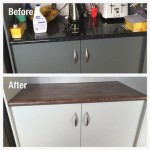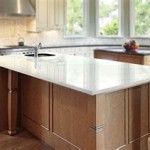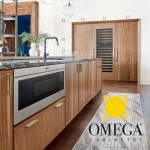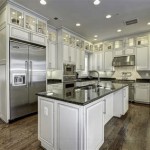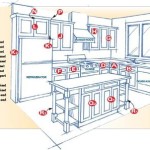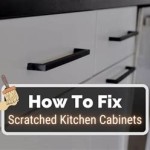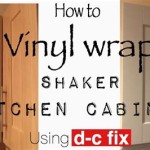Custom Maple Cabinets: A Cost Analysis Per Square Foot in the USA for 2024
Custom maple cabinets remain a popular choice for homeowners seeking a blend of durability, aesthetic appeal, and versatility in their kitchen or bathroom renovations. However, understanding the cost implications associated with these bespoke installations is crucial for budgeting and decision-making. This article provides a comprehensive analysis of the cost per square foot for custom maple cabinets in the United States during 2024, considering various factors that influence pricing.
The price of custom maple cabinets is significantly influenced by several factors, including the grade of maple wood, the complexity of the design, the level of customization, the hardware selected, the finish applied, and the geographic location of the project. Additionally, labor costs associated with manufacturing and installation play a substantial role in the overall expense. Therefore, a single figure representing the cost per square foot can be misleading without a thorough understanding of these contributing variables.
Generally, homeowners can expect to pay between $300 and $1,200 per linear foot for custom maple cabinets, a range that highlights the wide spectrum of options and associated costs. Translating this to a square foot price, assuming a standard cabinet depth of 24 inches (2 feet), the estimated cost ranges from $150 to $600 per square foot. However, this figure should be considered a broad estimate and is subject to significant variation based on the specific project requirements and choices made by the homeowner.
Understanding the Factors Influencing Maple Cabinet Costs
Several key elements contribute to the final price tag of custom maple cabinets. A detailed examination of these factors is essential for informed decision-making and accurate budgeting. These factors can be broadly categorized into material costs, labor expenses, and additional customization options.
Firstly, the grade of maple wood directly impacts the price. Maple is available in various grades, with higher grades exhibiting fewer knots and imperfections, resulting in a cleaner and more uniform appearance. Clear maple, the highest grade, commands a premium price due to its pristine quality. Select maple offers a slightly more budget-friendly option while still maintaining a relatively clean aesthetic. Lower grades, such as paint-grade maple, may contain more knots and color variations but are suitable for painted cabinets where the wood grain is less visible. The choice of maple grade will significantly influence the overall cost of the cabinets.
Secondly, the complexity of the cabinet design plays a crucial role. Simple, shaker-style doors and cabinets, characterized by their clean lines and minimalist design, are generally less expensive to manufacture than more intricate designs featuring raised panels, ornate carvings, or custom molding. The more complex the design, the more labor and specialized equipment are required, leading to higher costs. Similarly, custom features such as pull-out shelves, integrated lighting, or specialized storage solutions will add to the overall expense.
Thirdly, the finish applied to the maple cabinets impacts both the aesthetic appeal and the protection of the wood. Stain finishes, which enhance the natural grain of the maple, are typically less expensive than painted finishes. However, the quality of the stain and the number of coats applied can influence the price. Painted finishes, especially those requiring multiple coats and a high level of sanding between coats, are generally more labor-intensive and therefore more costly. Specialty finishes, such as glazes, distressing, or antiquing, will further increase the price.
Hardware selections, including knobs, pulls, hinges, and drawer slides, also contribute to the overall cost. While seemingly minor, the price of hardware can vary significantly depending on the material, design, and manufacturer. High-end hardware made from solid brass or stainless steel will be more expensive than standard hardware made from less premium materials. Soft-close hinges and drawer slides, which enhance functionality and reduce noise, are also typically more expensive than standard options.
Finally, labor costs associated with manufacturing and installation are a significant component of the total price. Labor rates vary depending on the geographic location and the experience level of the cabinet maker and installer. Areas with a higher cost of living typically have higher labor rates. The complexity of the installation, including factors such as the layout of the kitchen or bathroom, the presence of existing plumbing or electrical work, and the need for custom modifications, will also impact the labor costs.
Geographic Variations in Cabinet Pricing
The cost of custom maple cabinets can vary significantly depending on the geographic location within the United States. Areas with a higher cost of living, such as major metropolitan areas and coastal regions, typically have higher material costs, labor rates, and overhead expenses, resulting in more expensive cabinets. Conversely, areas with a lower cost of living may offer more competitive pricing.
For instance, homeowners in cities like New York City, San Francisco, or Los Angeles can expect to pay a premium for custom maple cabinets compared to homeowners in smaller towns or rural areas. This is due to factors such as higher rents for manufacturing facilities, higher wages for skilled labor, and increased transportation costs for materials. Understanding these geographic variations is crucial for budgeting and comparing quotes from different cabinet makers.
In addition to the overall cost of living, local demand for custom cabinets can also influence pricing. Areas with a high level of renovation activity or a strong housing market may experience increased demand, leading to higher prices. Conversely, areas with less renovation activity may offer more competitive pricing as cabinet makers compete for business.
Furthermore, the availability of local maple wood suppliers can impact the cost of materials. Areas with readily available maple wood resources may offer more competitive pricing compared to areas where maple wood must be transported from distant locations. Therefore, researching local suppliers and cabinet makers can potentially lead to cost savings.
Strategies for Managing Maple Cabinet Costs
While custom maple cabinets can be a significant investment, there are several strategies homeowners can employ to manage costs without sacrificing quality or aesthetic appeal. Careful planning, informed decision-making, and strategic negotiations can help to keep the project within budget.
One effective strategy is to simplify the design of the cabinets. Opting for shaker-style doors, simpler molding, and fewer custom features can significantly reduce manufacturing costs. Focusing on essential storage needs and avoiding unnecessary embellishments can help to streamline the design and lower the overall price.
Another strategy is to consider using a combination of custom and semi-custom cabinets. Semi-custom cabinets offer a range of standard sizes and configurations that can be adapted to fit the specific dimensions of the kitchen or bathroom. Using semi-custom cabinets for standard areas and custom cabinets for unique or challenging spaces can help to optimize costs without compromising functionality.
Comparing quotes from multiple cabinet makers is essential for ensuring competitive pricing. Obtaining at least three quotes from different cabinet makers allows homeowners to compare prices, services, and quality. It is important to carefully review each quote to ensure that it includes all necessary materials, labor, and installation costs. Requesting detailed breakdowns of the costs can help to identify potential areas for negotiation.
Choosing less expensive hardware can also help to reduce costs. While high-end hardware can enhance the aesthetic appeal of the cabinets, standard hardware options can provide similar functionality at a lower price point. Exploring different hardware styles and materials can help to find cost-effective alternatives without sacrificing quality.
Finally, timing the renovation project carefully can potentially lead to cost savings. Cabinet makers may offer discounts or promotions during certain times of the year, such as the off-season or during slow periods. Scheduling the project during these times can help to take advantage of these opportunities and reduce overall costs. Being flexible with the timeline and allowing the cabinet maker ample time to complete the project can also help to avoid rush fees or additional charges.

Explore The Latest Cabinets For Kitchen Trends That Will Blow Your Mind In 2024 Reno Guys

How Much Do Custom Cabinets Cost 2024 Data

How Much Do Custom Cabinets Cost Determining Roi And Value Quality Cabinetry

How Much Do Custom Cabinets Cost 2024 Data

How Much Do Custom Cabinets Cost 2024 Data

How Much Do Custom Cabinets Cost 2024 Data

Kitchen Cabinets Cost 2025 Updated

Kitchen Cabinet Cost Estimator 2025 Guide For Dealers

Kitchen Cabinet Refacing Cost 2024 Guide From Homebuddy

How Much Do Custom Cabinets Cost Determining Roi And Value Quality Cabinetry
Related Posts


